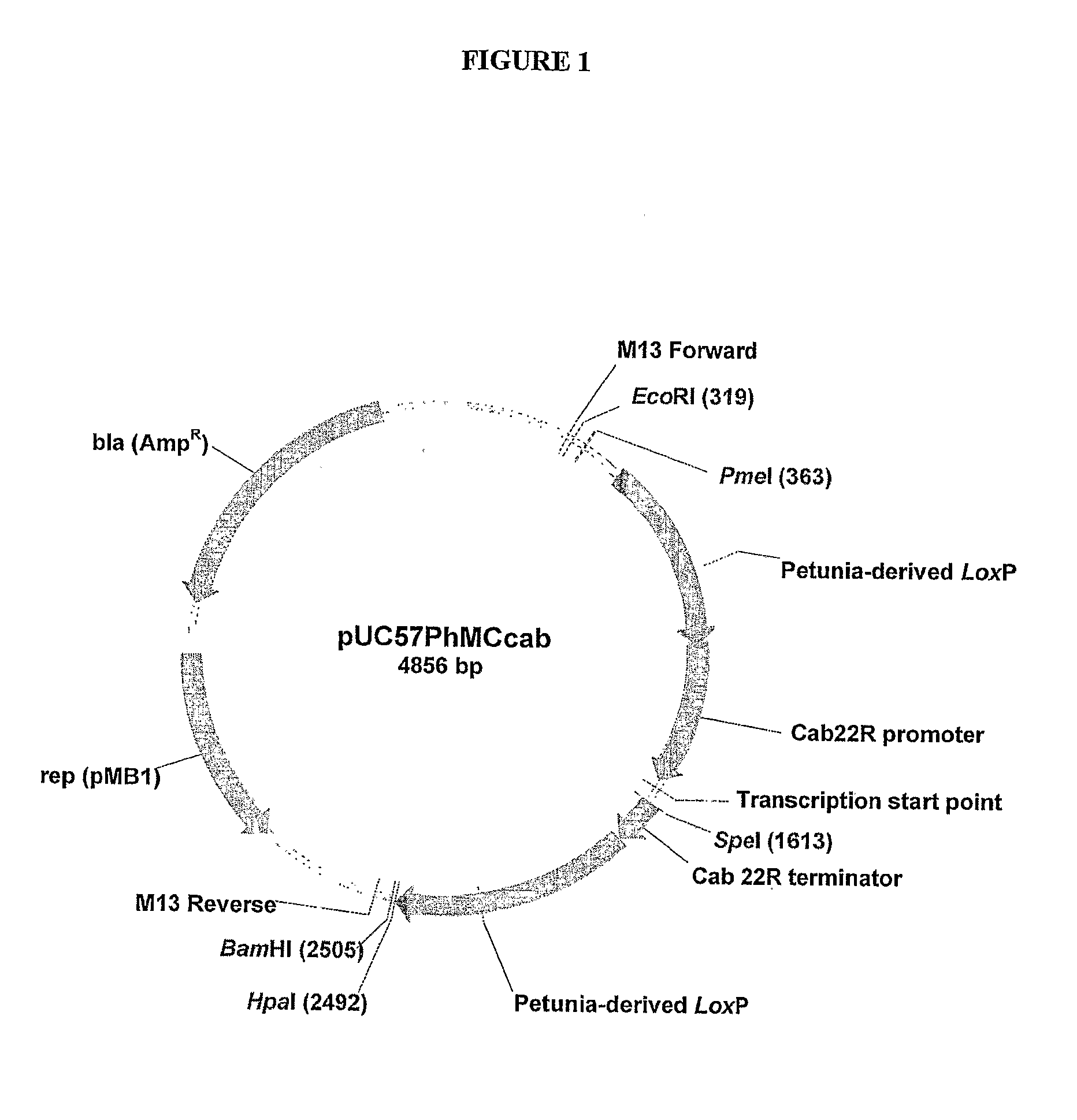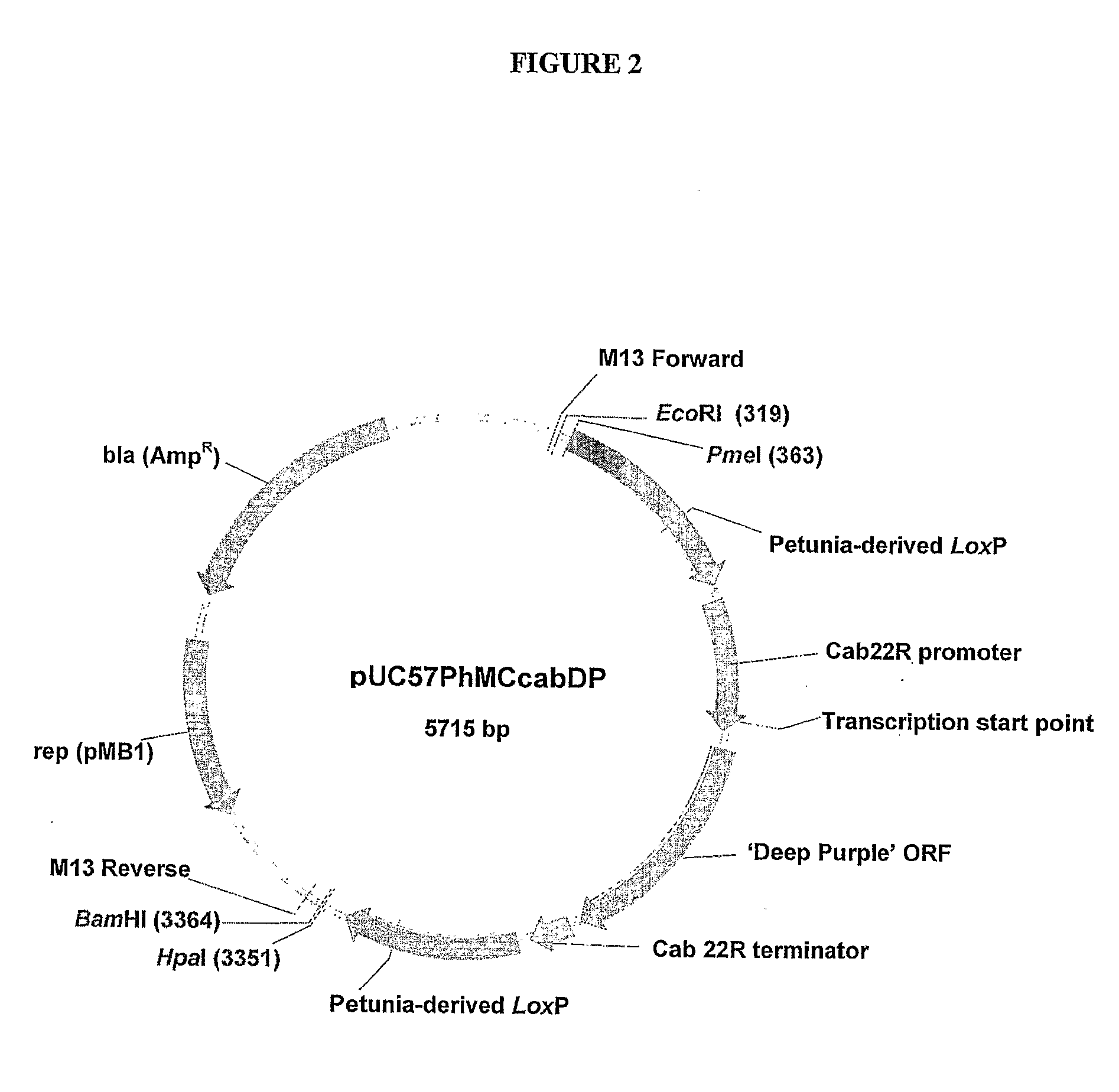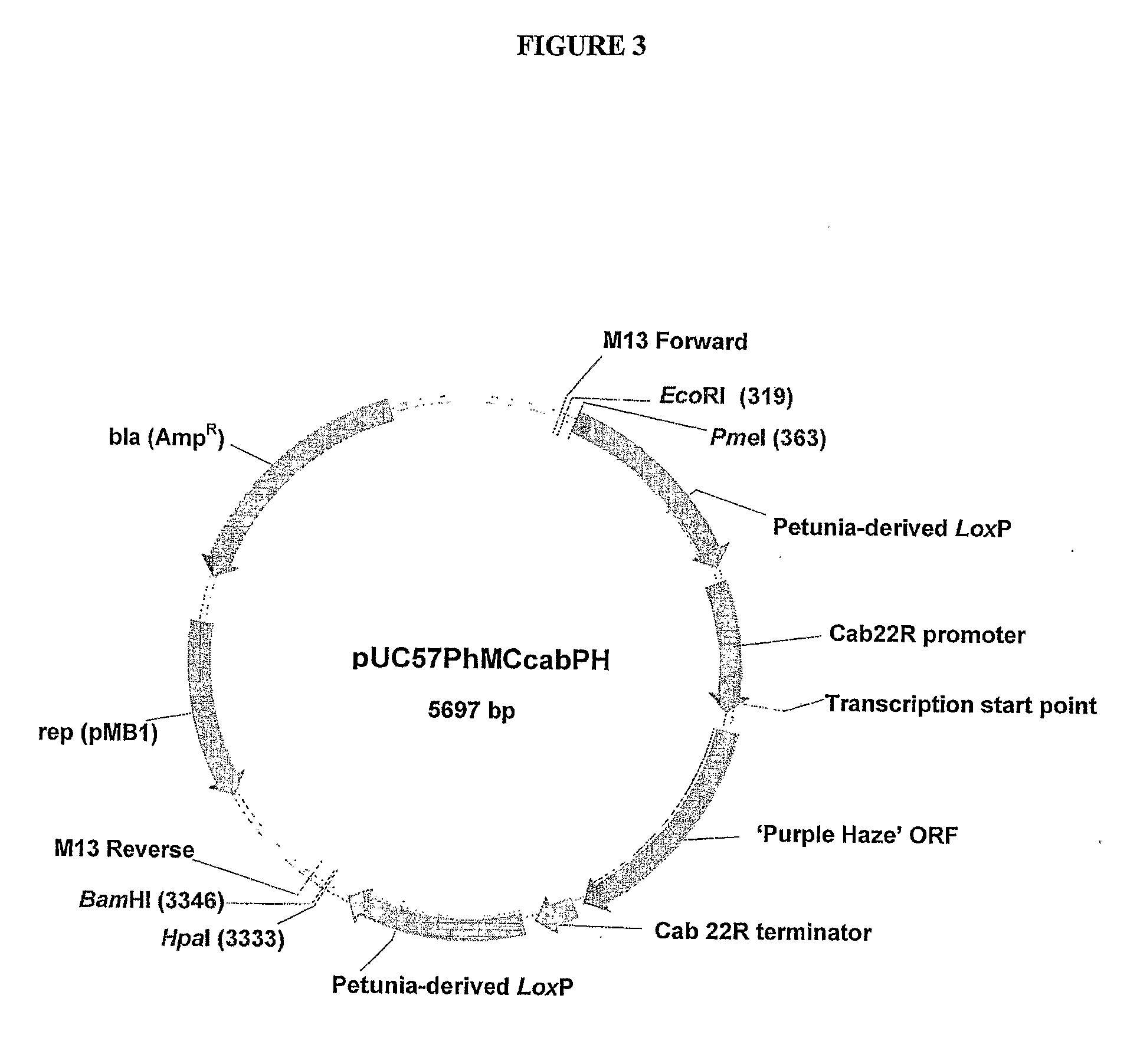Plant transformation using DNA minicircles
- Summary
- Abstract
- Description
- Claims
- Application Information
AI Technical Summary
Benefits of technology
Problems solved by technology
Method used
Image
Examples
examples
[0360]The invention will now be illustrated with reference to the following non-limiting examples.
[0361]Examples 1 and 2 describe compositions and methods for transformation via direct DNA uptake. Example 1 involves use of a loxP-like / Cre recombination system. Example 2 involves use of a frt-like / FLP recombination system and a loxP-like / Cre recombination system.
[0362]Examples 3 and 4 describes compositions and methods for transformation via Agrobacterium-mediated gene transfer. Example 3 involves use of a loxP-like / Cre recombination system. Example 4 involves use of a frt-like / FLP recombination system and a loxP-like / Cre recombination system.
[0363]Example 5 describes design construction and verification of plant-derived loxP-like recombinase recognition sequences.
[0364]Example 6 describes design construction and verification of plant-derived frt-like recombinase recognition sequences.
example 1
Design, Construction, Production and Use of Petunia Minicircles for Direct DNA Uptake
[0365]A 2129 bp sequence of DNA composed from a series of DNA fragments derived from petunia
[0366](Petunia hybrida) was constructed. A key component was a 0.7 kb direct repeat produced by adjoining two EST's to create a petunia-derived loxP site at their junction. A petunia gene expression cassette, consisting of the 5′ promoter and 3′ terminator regulatory regions of the petunia cab 22R gene, was positioned between these direct repeats. The cloning of this 2129 bp fragment into a standard bacterial plasmid allows the in vivo generation of petunia-derived minicircles by site-specific intramolecular recombination upon inducible expression of the Cre recombinase enzyme in bacteria such as Escherichia coli. The resulting minicircle is composed entirely of DNA derived from petunia. The cloning of the coding regions of petunia genes between the regulatory regions of the cab 22R gene provides a tool to ge...
example 2
Design, Construction, Production and Use of Potato Minicircles for Direct DNA Uptake
[0406](A) Potato Minicircles Based on Potato-Derived frt-Like Sites
[0407]A 2960 bp sequence of DNA composed from a series of DNA fragments derived from potato (Solanum tuberosum) was constructed in silico. A key component was a direct repeat of about 0.35 kb produced by adjoining two EST's to create a potato-derived frt-like site at their junction. A chimeric potato gene, consisting of the coding region of a potato myb transcription factor, the D locus allele Stan2777 (Jung et al. 2009, Theoretical and Applied Genetics, 120: 45-57), under the transcriptional control of the regulatory regions of a potato patatin class I gene, was positioned between these direct repeats. The cloning of this 2960 bp fragment into a standard bacterial plasmid allows the in vivo generation of potato-derived minicircles by site-specific intramolecular recombination upon inducible expression of the FLP recombinase enzyme in...
PUM
| Property | Measurement | Unit |
|---|---|---|
| Angle | aaaaa | aaaaa |
| Angle | aaaaa | aaaaa |
| Angle | aaaaa | aaaaa |
Abstract
Description
Claims
Application Information
 Login to View More
Login to View More - R&D
- Intellectual Property
- Life Sciences
- Materials
- Tech Scout
- Unparalleled Data Quality
- Higher Quality Content
- 60% Fewer Hallucinations
Browse by: Latest US Patents, China's latest patents, Technical Efficacy Thesaurus, Application Domain, Technology Topic, Popular Technical Reports.
© 2025 PatSnap. All rights reserved.Legal|Privacy policy|Modern Slavery Act Transparency Statement|Sitemap|About US| Contact US: help@patsnap.com



